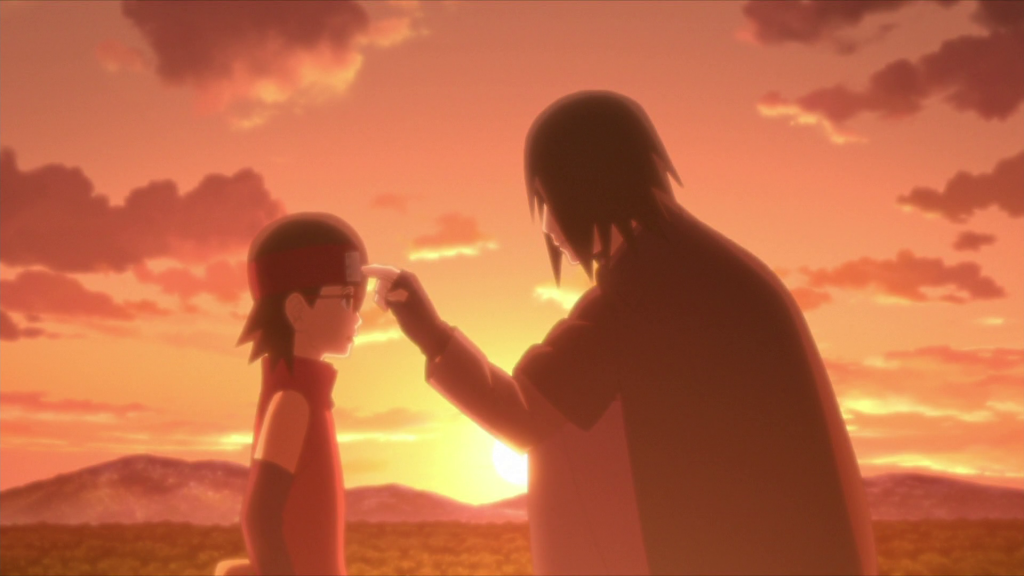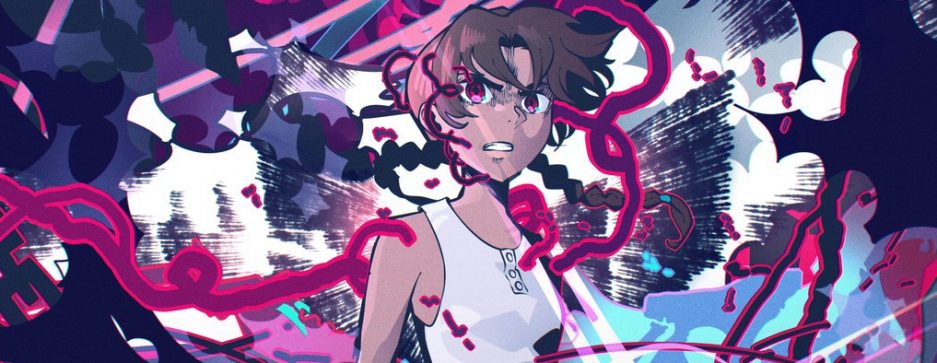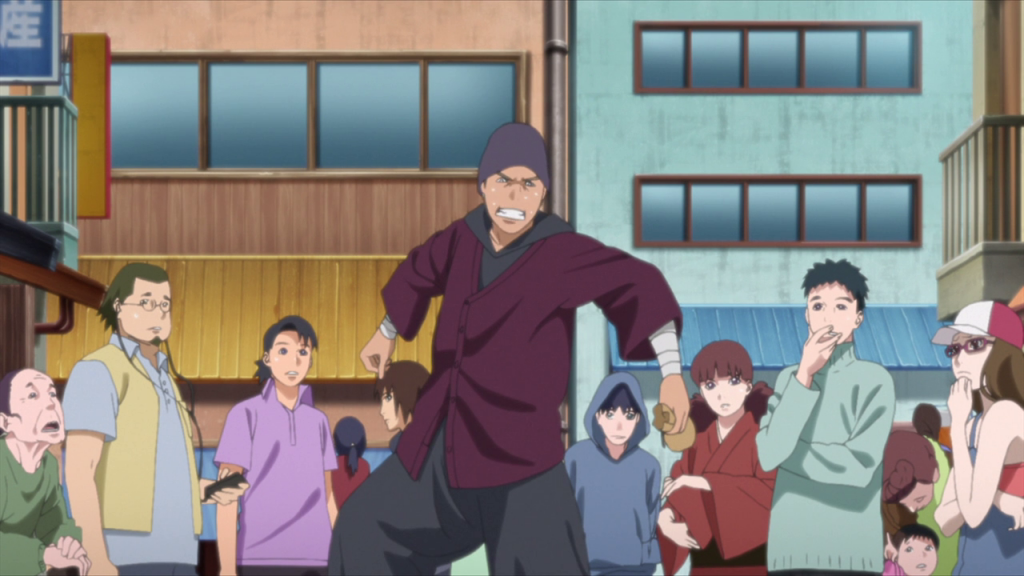2019 has been quite the strange year for the Naruto franchise, and for proof of that look no further than this recent climactic episode being the first time I’ve had a reason to write about the series’ production on this blog. With most of the staff occupied elsewhere in the industry, Boruto has been on something akin to auto-pilot for much of the year, instead turning to outsourcing studios such as Jiwoo and Hanjin to handle the bulk of the animation on low-priority episodes which often feature little to be excited about. Of course the in-house photography team deserves praise for their continued excellence, as well as one talented animation star in particular whose efforts will be discussed at length shortly.

While my previous assessment may sound rather harsh, keep in mind this is a franchise that has set the bar extremely high for itself. One which has come to define the biggest moments in shonen anime by way of the commonly referred, “sakuga-episode”. Under the direction of Hiroyuki Yamashita the series saw ambition far beyond the usual scope of long running productions, regularly featuring massive outings, with one of them even doubling over as an industry-wide event! Moreover, Yamashita should be commended for the smaller details as well, such as the way he maintained a solid rotation of Chief Animation Directors tasked with ensuring a high level of consistency even across entirely outsourced episodes.
Since his stepping down as Director following episode 65, the series has struggled to retain key staff; no doubt also due to reasons besides his leaving, such the low-stakes story content as well as other projects attracting animators, but regardless, this past year has been rather uneventful. It is also important to note that this is a natural part of the process however, and fans shouldn’t be too surprised. The anime industry is a fluid machine with many moving parts, and as such, long running series within that machine will be susceptible to the ebs and flows of time. Where one year might bring great successes, the next perhaps not so much… That’s not to say it has been completely without highlights though, which brings us back to the topic at hand: Episode 135 and its brightest star, Kana Ito!
Ito’s expressive character work completely stole the show on an action-packed episode containing some of the greatest talents this series has ever known. Tasked with the scene between Sakura and Sasuke, she lent believable weight and volume to the characters, displaying a level of tactility rarely seen in TV animation. The anxious emotive language spilling from Sakura’s face as she struggles to make sense of the feelings of connection to the man before her tells an entire story, even when presented without sound. Upon fainting under the duress, her body takes on rag doll properties, with parts moving independently of each other, acting solely in response to outside forces. That many would liken it to 3DCGI is a testament to just how much fundamental drawing skill is on display here.

To discover the roots of such professional draftsmanship one has to look no further than her Production I.G. background- a studio with a long history of producing animation talents keen on the nuanced subtly of character acting, and Kana Ito is obviously no exception. After graduating from their program she would progress to Studio WIT, a logical step considering their subsidiary position to I.G. and between Kabaneri of the Iron Fortress, Magus Bride and even Attack on Titan S2, Ito made a habit of offering tasteful acting amidst more brutish settings.
Now partly a freelance animator, Ito has made various stops around the industry including very recently on Fate/Go Babylonia, and of course, Boruto! All while maintaining a strong connection to the I.G. side of things through participation on the likes of KazeTsuyo and Vinalnd Saga.
As far as that somewhat unexpected relationship to Boruto goes, Ito cites the franchise as being one of her inspirations for becoming an animator! That should hardly be a surprise considering how many talents across the industry have been enamored by the legendary efforts of Atsushi Wakabayashi and Norio Matsumoto, but also for the generation after them who had the pleasure of Hiroyuki Yamashita’s strongest outings as well.
In terms of physically making it onto the staff however, we have former Studio Pierrot Production Assistant Yoko Kanamori to thank. After many years of organizing staff at Pierrot earlier this decade, Kanamori would step foot into WIT to do a similar job on Attack on Titan Season 1, and like countless production assistants before her, that job would lead to directing opportunities around the same time Kana Ito was starting her career at the studio. You can probably see where this is going by now, but the two would cooperate often and became fast friends. With Ito’s eventual mentioning that she enjoyed the series known as Naruto, Kanamori decided to put Ito in touch with her former connections at Pierrot who coincidentally happened to be looking for animators for Boruto #65. Thus began the start of her participation on the franchise, one which has been the main highlight over the past year!
One element in particular which sets Ito apart from her peers is found in the personable touch she regularly imparts into her genga, and I can think of no better example than the following:
Through carefully crafted secondary motions applied to already solid fundamental running animation, Ito’s characters feel alive with energy in ways which aren’t commonly found, not just in the series, but moreover the industry as well. Under her hand, simple gestures cease to be thoughtless execution of the storyboard and instead transform themselves into a means of creative expression which she handles time and again with grace. In the case of this scene, I would point to the delicate line-weight found in the vines and face of our nameless perpetrator, one which it would seem she took upon herself to design since it resembles that of Takahiro Chiba’s Kaze ga Tsuyoku Fuiteiru– a series she was working on at this time, much more-so than Tetsuya Nishio’s.
Even the bystander characters, normally an afterthought, are brimming with personality under Ito’s control. To the point where many feel like they could be naturally inserted into larger roles in the series without skipping a beat.
As much as I would love to breakdown every scene Ito has contributed to Boruto over this past year, it would be too much to ask on my part to write and yours to read during this busy time of year, but I assure you if you take that initiative yourself you will find something special in each of them.
The latest Kana Ito installment on Boruto #135 ended up serving as the catalyst for this post, but more importantly it ends up being a tidy book-end for a hugely successful 2019 which saw her emerge and gain recognition as a true talent for the first time. From here, one can only speculate at the possibilities her career may take. Continued participation on Boruto is likely, however with the recent appearance on F/Go:Babylonia there exists the chance we could see her more often on large profile productions as production assistants around the industry are starting to take note and request of her tremendous talent. An outcome which animation fans everywhere should be all the more excited for!




